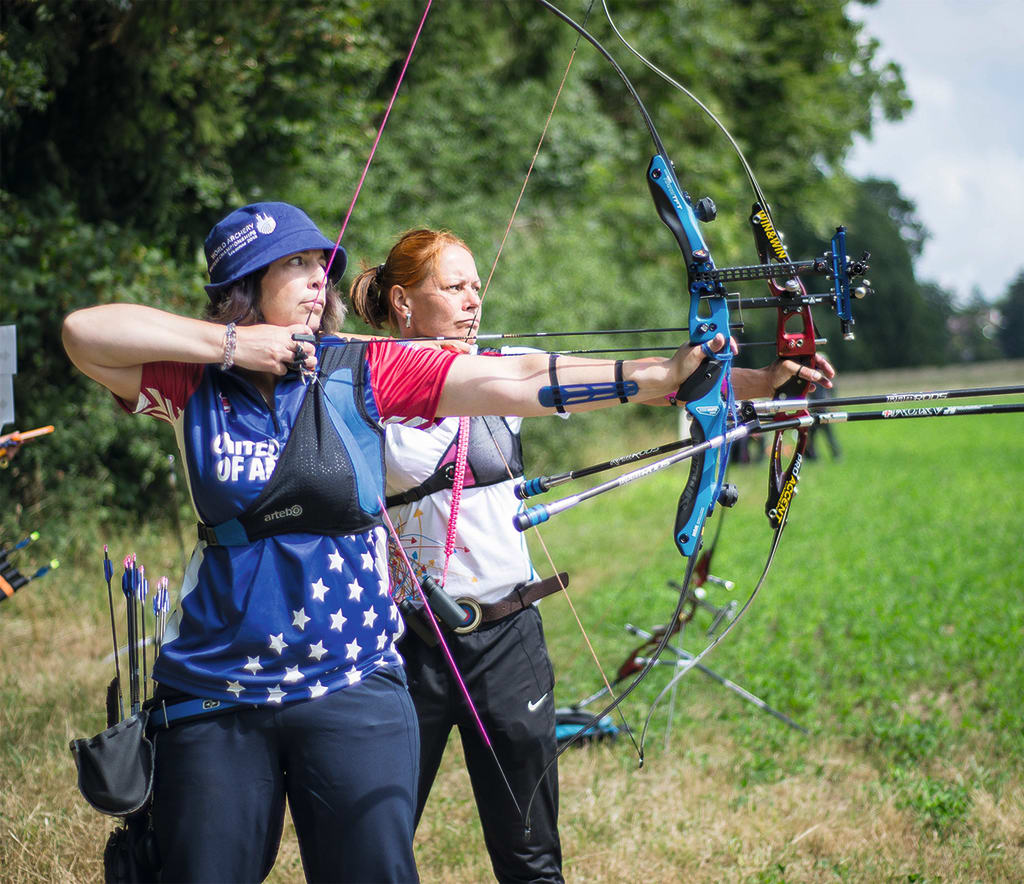Are You New To Archery?
Are you thinking about getting a bow for the sports? So here are some basics tips for beginners.

Is it safe to say that you are new to arrow-based weaponry? Perhaps you are interested in bows and arrows. However, you're not exactly sure where to begin. With such countless various kinds of bows and arrows, such a lot of hardware, stuff, and insider language – it tends to be somewhat befuddling to a novice bowman.
Dread not; this guide will disclose to you all you require to think about best bow release and arrows to begin shooting. We'll cover the various sorts of bows and arrows, the different styles of bows, and what you should get to start shooting today.
So in case you're preparing, we should begin:
There are five fundamental kinds of arrow-based weaponry: target toxophilite, field arrow-based weaponry, chasing, conventional arrow-based weaponry, and 3D bows and arrows. What sorts of bow you'll need will rely upon which of these styles you'll be shooting.
The styles will, in general, cover somewhat numerous toxophilites that shoot target arrow-based weaponry may likewise shoot field arrow-based weaponry, etc. So it's ideal to purchase a bow that fundamentally suits your essential style, but at the same time, is at any rate excellent for shooting some other kinds of toxophilite you're keen on.
Target toxophilite is shot both inside and out at, you got it, targets. These are the usual circles inside a circle type focused on that you've most likely seen multiple times throughout the long term. In objective toxophilite, contenders shoot in an orderly fashion at the objectives and then score by an appointed authority.
Field toxophilite is like objective bows, and arrows in that bowmen take shots at (three or four distinct sorts of) targets. Infield bows and arrows, you generally shoot outside. The objectives might be up a slope above you or in a valley underneath you – they're not in an orderly fashion like objective toxophilite.
There may likewise be tree limbs, brush, or some other kind of impediment halfway hindering your perspective on the objective. In a general shoot-in little gathering, toxophilite will stroll a course or way through the forested areas, halting to take shots at each target.
Chasing is straightforward sufficient that it shouldn't require quite a bit of clarification. Trackers use bows when chasing creatures that their state or neighborhoods them to bow chase.
Conventional arrow-based weaponry is certifiably not a standard sort of toxophilite with rules, rules, and guidelines like objective or field arrow-based weaponry. Customary bowmen shoot longbows or a healthy body, wooden recurve bows, much the same as toxophilite has for millennia prior.
Customary bows and arrows are more about returning to the recorded shooting styles, as opposed to a scored game. There are no extravagant bow sights, stabilizers, or other present-day innovations in conventional shooting.
My undisputed top choice sort of toxophilite, 3D arrow-based weaponry, is comparative here and there to handle arrow-based weaponry as you regularly walk a course through the forested areas. The distinction is that you are instead taking shots at genuine measured 3D variants of creatures.
You'll walk the way in a little gathering and stop to take shots at each target. There are likewise 3D shoots and competitions that offer prizes for the top shooters.
As I said previously, the sort of bow you'll need to purchase will be resolved to a great extent by which of these styles you expect to shoot. How about we rapidly cover them now:
Current Recurve Bows
The 'advanced' in the present-day recurve bows alludes to bows produced using more than one material and have a few separable parts. Dissimilar to one-piece wooden recurve bows, current bows will have appendages delivered using fiberglass or carbon, while the riser (the middle piece of the bow that you hold with your bow hand) could be made of wood.
Numerous advanced recurve also bring down bows, implying that the appendages are detachable, making them a lot simpler to store. Also, having the option to change the appendages means that you can change the draw weight of the bow you're shooting.
Suppose that you're as of now shooting a thirty-pound bow. However, it would be best if you climbed to shooting a 45-pound bow. It's far less expensive to purchase a bunch of new appendages for your bow, as opposed to buying an entirely different bow!
They're Used For: Modern recurves are conceivably the most adaptable kind of bow, as they're incredible for pretty much every style of arrow-based weaponry. It is utilized in an objective, field, and 3D bows and arrows the same. You can likewise use recurve bows for chasing on the off chance that you need to, be sure that you get a bow with a draw weight of at any rate forty or fifty pounds.
Compound Bows
Compound bows were intended for chasing. Their principal advantage is that whenever you've moved the bow back totally, you need to keep down a little bit of the bow's total draw weight.
In contrast to different bows, the cam (gears at each finish of the bow) and pulley framework bolsters the vast majority of the bow's draw weight. It permits a toxophilite to keep the kneel for longer time frames with little exertion.
Compound bows are additionally utilized in objective toxophilite and field arrow-based weaponry, however not exactly as much as recurve bows, which are the solitary sort permitted in Olympic accurate arrow-based weaponry.
They're Used For: Compound bows are fundamentally utilizing for chasing. However, it can be used in different kinds of bows and arrows.
Longbows and Wooden Recurve Bows
Longbows and one-piece wooden recurve bows are the go-to bows for conventional bows and arrows. They can likewise be utilized in objective, field, and 3D projections and hands also.
In case you're primarily keen on conventional toxophilite, a longbow or wooden recurve would be the right sort of bows for you. You can, in any case, shoot them in different kinds of bows and arrows. However, they're not exactly as cutting edge as large numbers of the more current bows.
In case you're keen on longbows, you could look at this page about longbows versus recurve bows or this manual for beginning in customary toxophilite.
They're Used For: Great for customary bows and arrows; however can be shot in different sorts of toxophilite.
Whenever you've sorted out what styles of toxophilite you're keen on, just as the kind of bow you'll require, you'll need to locate the correct bolts for your bow.
Today bolts produce a wide range of kinds of materials, everyone having their qualities and shortcomings. Using fiberglass, carbon, aluminum, aluminum-carbon composite, and wood individually, bolts are presently made.
Legitimate Shooting Form
There are two components in bows and arrows that practically all toxophilite will concur are the main: Form and Accuracy. An appropriate structure is urgent in bows and arrows. Being that it's far simpler to gain proficiency with a decent propensity than it is to supplant a terrible one, it's critical to focus on having great structure all along.
In case you're new to toxophilite, be sure you don't begin with a bow with a draw weight that is excessively hefty for you. It's a vastly improved plan to start low and move gradually up.
The structure is particularly imperative to recurve bow toxophilite, as the appendages of a recurve bow are lighter and inappropriate behavior could force the bow–making bolts to veer askew.
Your Shot Sequence
A shot succession is simply one more method of saying "all that you do when you shoot every bolt." So, for instance: Standing upright, knocking your bolt, stepping your bow back, pointing last delivering the bolt – is the shot grouping.
Next is a novice shot succession to kick you off shooting today; you can generally switch things up later on as you get more competent at shooting.
Legitimate Stance
In case you're correctly given, your bow ought to be holding in your left hand, and you should remain at the ninety-degree point to the objective. You are implying that the outside of your left foot ought to confront the goal in an orderly fashion.
Remain with your feet shoulder-width separated, zeroing in on your stance as you step the bow back. Your eyes should both be open and should remain zeroed in on the objective from before you move the bow around – until the bolt has hit the goal.
Nocking the Arrow
The nock is only the piece of the rear of the bolt that snares onto the bowstring. Nock the bolt under the nocking point (the metal ring on the bowstring). Ensure that you hear a real snap as the bolt nocks onto the bowstring.
The file plume (the odd hued quill or vane on your bolt) ought to confront away from the bow for most arrangements. It can fluctuate for compound bows with drop-away bolts rests or different formats.
Bowstring Grip
There are a couple of various approaches to grasp the bowstring when you move back the bow and deliver the bolt; we'll do two or three of them here.
For one thing, you shouldn't hold the bolt by any stretch of the imagination. If the bolt is appropriately knocking on the bolt, the nock should clutch the bowstring without anyone else. Your fingers should hold the actual bowstring.
Hold the bowstring with the list, center, and ring fingers. Utilize just the substantial piece of your fingers past the fingertips, however not so far that it's in the primary joint of your fingers.
Use whichever one of these feels more characteristic and agreeable to you. You could likewise utilize delivery help if you preferred not to hold the bow with your fingers. A delivery help is a little gadget that has the bowstring and deliveries it by utilizing a trigger.
Drawing the Bow
To draw the bow, move back the string along your bow arm (your left arm if you're correct given). You should attract the bow a straight line back to the anchor point all over.
Your anchor point is where you hold your draw hand at full draw while you're focusing on the objective. It is ordinarily the jaw, nose, or upper cheek for a great many people.
When you step the bow back, attempt to focus on utilizing the muscles in your back. Your shoulder bones should move towards one another.
Anchor Point
Use whichever anchor point as depicted above generally feels significant and characteristic to you.
In case you're utilizing a best bow release for hunting, the bowstring should contact both your jawline and your nose; this will help while pointing with your company.
In this anchor point, the pointer is set simply under your jaw bone. Your mouth ought to be closed with your teeth together. It would help if you didn't have anything disrupting everything, which implies no gum in your mouth.
In a perfect world, your bow hand, elbow, and your draw hand should all be in an orderly fashion when you have the bow back at full draw—keeping both your shoulders lower than this line while still keeping a casual stance.
Focus
Focus on the objective. You can utilize a bow sight or use other pointing procedures if you're shooting your bow without a picture.
Delivery the Arrow
Delivery the bolt by proceeding to pull your shoulder bones towards one another, keeping the fingers of your draw hand loosened up enough, so the bolt nearly delivers all alone once you get to the correct point.
For more Details Visit factflies.com
About the Creator
Wiley Wafer
Hi, I am Wiley Wafer I live in California, I am a creative writer. I write about technology and product reviews latest invocations etc...






Comments
There are no comments for this story
Be the first to respond and start the conversation.